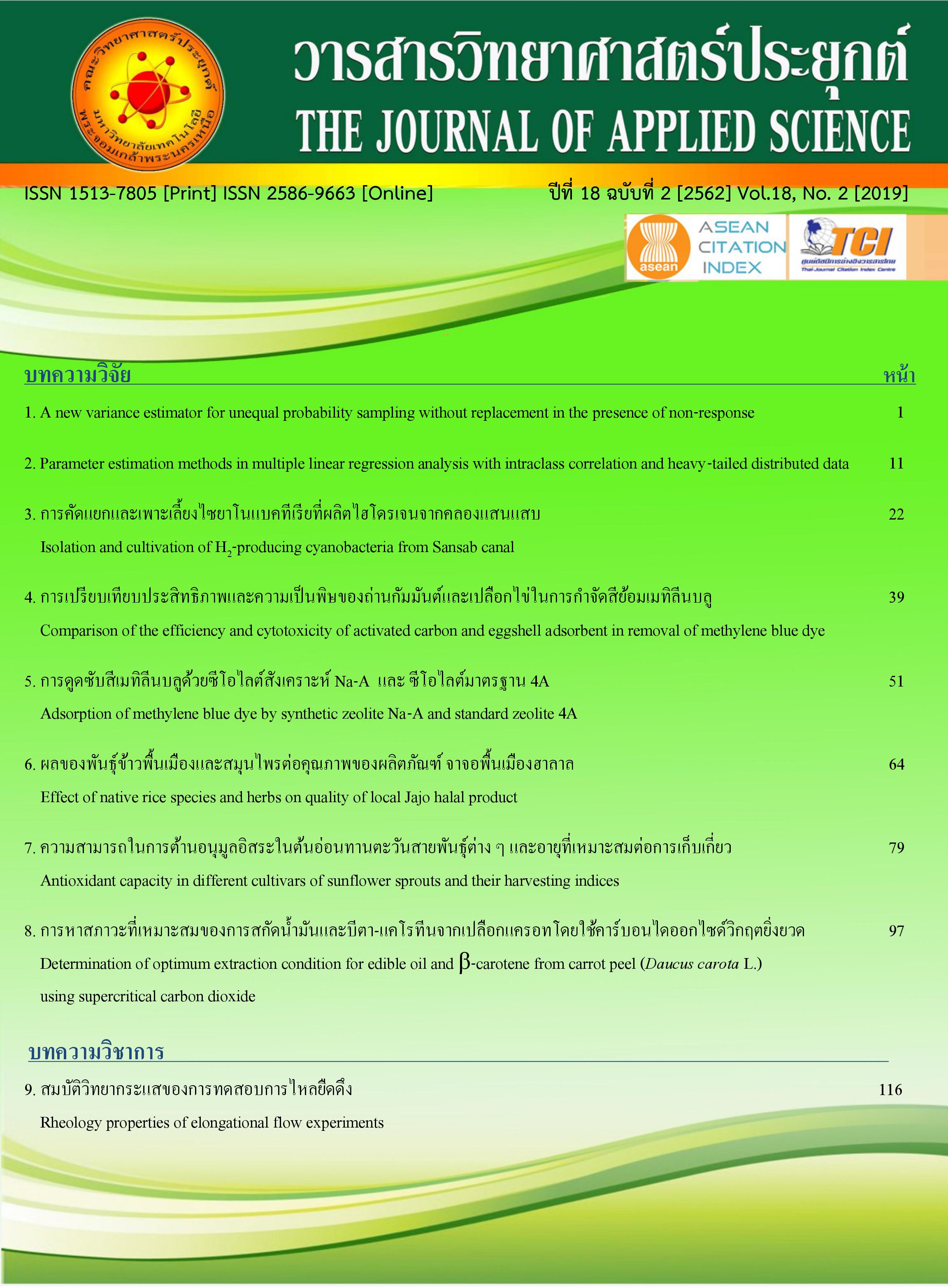Antioxidant capacity in different cultivars of sunflower sprouts and their harvesting indices
Keywords:
sunflower sprout, antioxidant capacity, phenolic compound, chlorophyll, carotenoidAbstract
Nowadays, consumers pay more attention to healthy food consumption. Consumption of crop sprout has been increasing in popularity. The crop sprouts provide higher nutritional value than seeds. Sunflower sprout is considered a favored sprout due to its rich nutrition and phytochemicals such as phenolic compounds, vitamins and various pigments, especially antioxidant activity substances, the important roles in human health care and disease prevention. This research aimed to investigate three sunflower cultivars to select the proper cultivar and its age period for harvesting to receive the highest antioxidant capacity. Three different sunflower cultivars (Helianthus annuus L. cvs. Jumbo, Pacific and Artuel), that consumers prefer in Thai market, were elucidated by four harvesting time: 5, 7, 9 and 14 days. The studies of growth, the amount of important substances in relation to antioxidants including total phenolic compound, chlorophyll, carotenoid and antioxidant capacity were carried out. The results revealed that within 14 days of cultivation, cv. Pacific sprout showed the highest growth rate,
followed by cvs. Jumbo and Artuel (0.20, 0.18 and 0.16 g fresh weight per day, respectively). An antioxidant capacity by DPPH free radical scavenging assay and total phenolic content analysis also indicated that 5-day-old cv. Pacific sprout had the highest antioxidant capacity (14.38 milligrams equivalent of ascorbic acid per 100 grams of fresh weight) with high total phenolic content to 73.09 mg equivalent of gallic acid per 100 grams of fresh weight. In the analysis of chlorophyll content and carotenoid content, cv. Pacific sunflower sprout for 14 days showed the highest of chlorophyll a, total chlorophyll and carotenoid contents at 0.37, 0.12, 0.57 and 7.4 mg per gram of fresh weight, respectively. To obtain the most antioxidants from sunflower sprout, cv. Pacific sunflower sprout of 5 days was suitable for harvesting. This study confirmed that genotype of sunflower seed affected an antioxidant capacity of sunflower sprout. Probably, the dominant substances in antioxidant capacity by DPPH free radical scavenging assay are total phenolic compounds.


